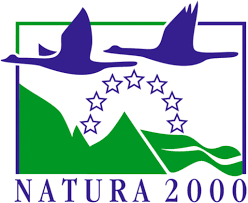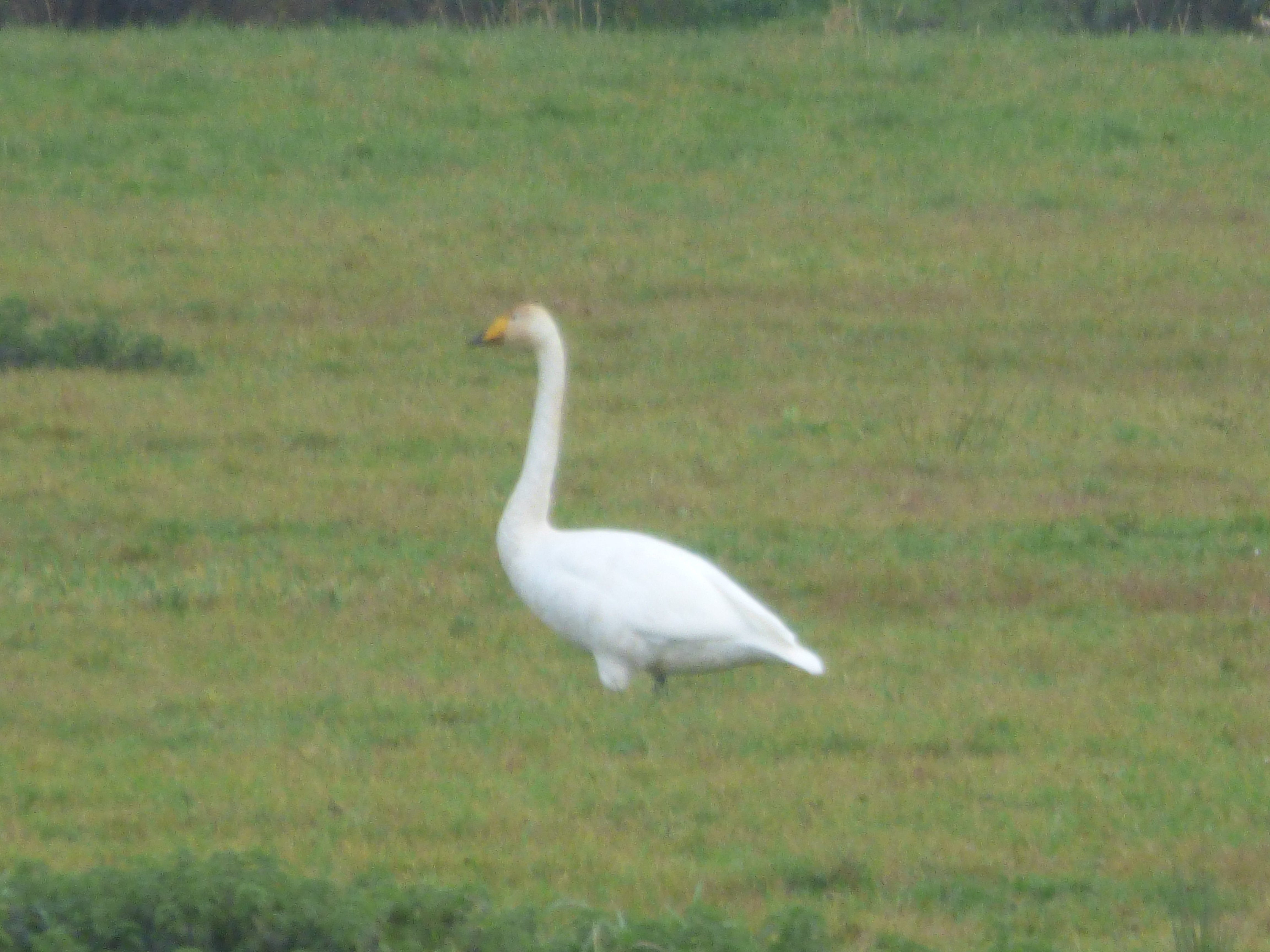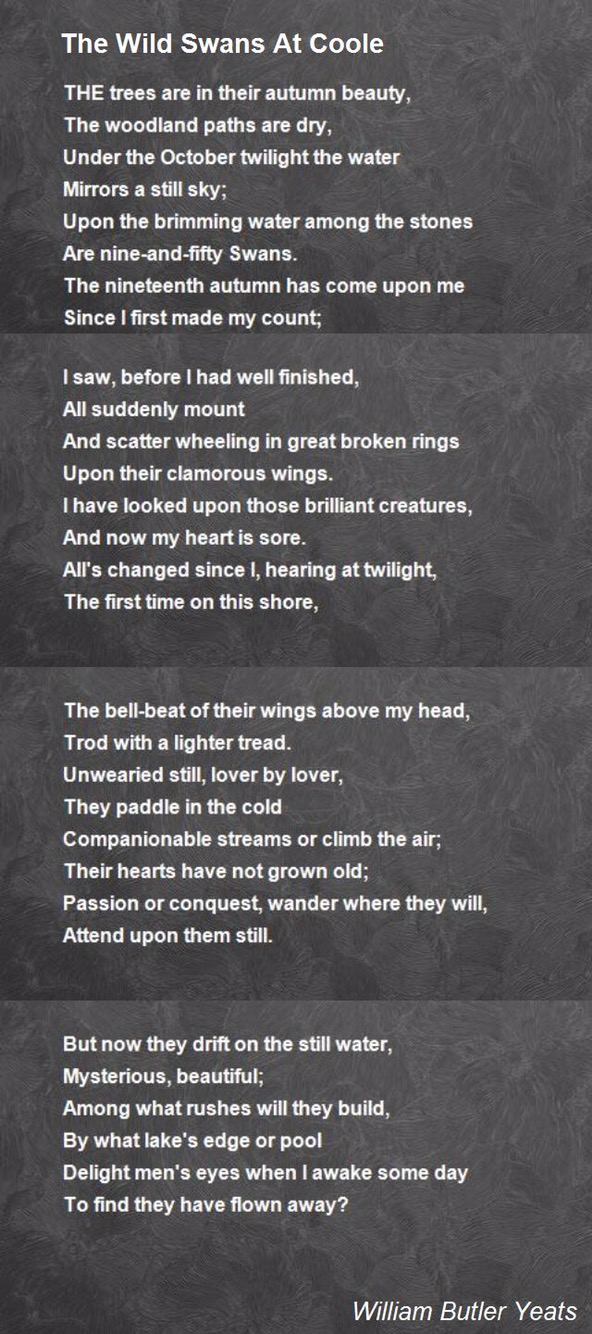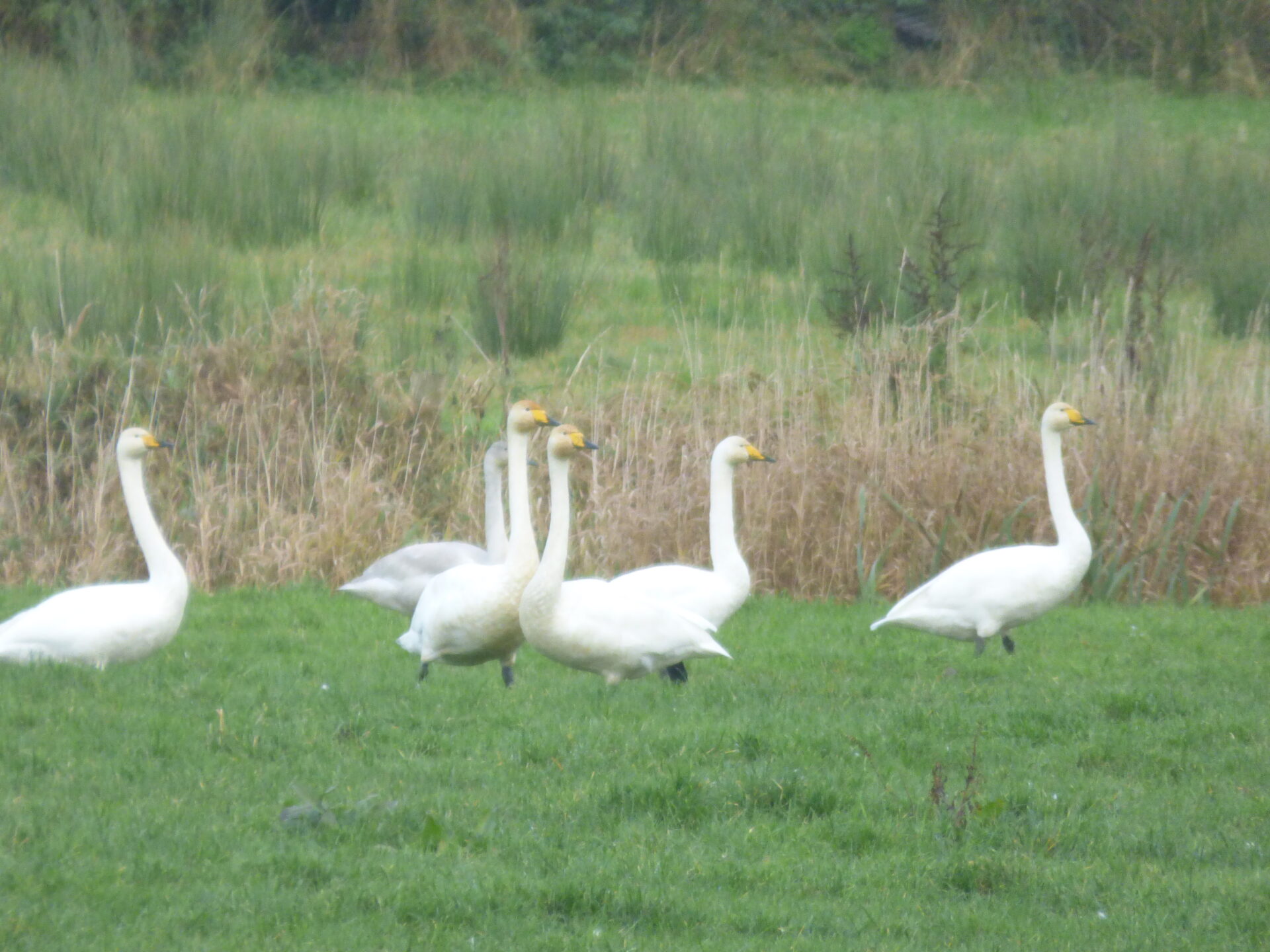As the days get colder, we in Fermanagh look forward to some wonderful Wintering visitors in Upper Lough Erne. You could almost miss them, if your eyes were not looking for them, but these birds are iconic travellers! Welcome to my blog on the striking and majestic Whooper Swan (Cygnus Cygnus)! Regarded as the true wild swan. John Ray’s Ornithology (1676) referred to it as ‘The Elk, Hooper or Wild Swan’. It’s scientific/Latin name means ‘swan swan’.
We went searching for our welcome visitors yesterday, keeping our eyes peeled on the fields it grazes on, keeping our ears alert for its distinctive, honking trumpeting. We got to our destination of Knockninny without seeing anything much except Cormorants and a huge paddling raft of Tufted Duck – always lovely to see also. We watched the birds for a while, searching the balding hedgerows for passerines, felt the Autumn sun and let our lovely rescue greyhound Rosie run on the small sheltered bay. We drove south a little with no sign of the Whooper so we decided to turn back towards home. Luckily, my mum, with her usual eagle eyes,, spotted a herd of Whoopers!! We parked at the entrance to a farm (we hoped we wouldn’t be in the way!) and stopped to look and feel the joy and relief that they had made it once more to feed and winter in my County.

They were magical to watch, gracefully bending their necks down to feed on the vegetation and craning upwards so that we could fully appreciate their beauty and size. Whoopers are very social water birds and they migrate in family groups, including the extended family. They were congregating in the fields by the roadside, people driving by with no knowledge that they were there, probably thinking they were just ‘ordinary’ swans. They are rare breeders in Scotland and a handful of pairs have also bred in Ireland, but here in Fermanagh we see the migrators from Iceland. They are an amber list species because of the threat to their feeding grounds, illegal persecution and the lack of breeding pairs here in the UK and Ireland. Whooper swans mostly pair for life and they can be seen accompanied by the offspring from the previous year. They breed in wetlands and the male and female build the nest together; the male protectively guards the nest while the female incubated the eggs (usually 4-7), The cygnets hatch after 36ish days and can fly at around 140 days. They use signals, such as head bobbing and wing flapping to signal flight, so when we saw these movements we took our leave, in case we were disturbing them. Observing the birds (around 50 or so) we also saw juvenile’s who had undertook this amazing journey with their parents.

These stunning birds are the symbol of the European Union network of protected sites called Natura 2000 made up of Special Areas of Conservation (SAC) and Special Protection Areas (SPA).

Whoopers are the only feature of the Fermanagh’s Upper Lough Erne SPA. I am really worried that our local politicians and voters never cared that leaving the EU means a very uncertain future for our Whoopers. Instead of using these birds as an environmental asset to obtain EU funding for our landowners in poorly productive land, I fear that it is easier for them to be branded as a pest. Yet this is our natural heritage, these are the same species of wild swans that are depicted in the Irish Children of Lir stories. The common or Mute Swans (no whooping) that most people see, were introduced to Ireland in the 1600’s. Once gone none of our children or their children will know or hear the whoop and trumpeting of Swans that mark the start of our winter.

The connecting of nature, culture and education seems to be missing and without it we live poorer lives. If you live in Co Fermanagh, please write to your MLA’s and MP to make sure they know how important these sites are for YOU and your community!!!! Please! If you live elsewhere and have important sites and habitats please do the same, that local connection is so important, if they know you care, if they know lots of you care, it might make a difference.
I’ll leave you with this wonderful poem by W.B. Yeats

Thanks for reading, I hope you enjoyed it and don’t forget, make your voice heard.
Dara



7 Responses
Great blog Dara. Fascinating to learn so much about swans. You’ve inspired me to go looking for swans this week 🙂
That’s great LJay! Hoping you can see some Whoopers where you are, I believe there are some near you! :)))
Great! i’m hoping to see the male hen harrier in the area too at the same time 🙂
Missed this blog the first time around and lovely to read as I’ve just seen my first flock today. Whoop Whoop Whoopee!! Lovely read Dara.
Thanks Rose!!
Reblogged this on Young Fermanagh Naturalist and commented:
Hey everyone, I’m just sharing my Whooper Swan blog from last year as we had our first sightings of them at the weekend! When dad logged them onto the CEDaR (the recording database), we were told that these the first sightings! There were five in the field and their cyclical presence always gives me hope, that they keep returning year after year is a wonderful and comforting thing
I hope you enjoy reading it!
Dara ????